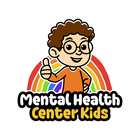A research article published in Frontiers for Young Minds talks about how early chatter helps kids learn and grow. When babies hear and use words, they’re not just making sounds — they’re building important skills for thinking, learning, and talking with others.
The more words they hear and say, the better they get at solving problems, understanding feelings, and doing well in school.
In this paper, the authors discuss the power of early language, how it contributes to lifelong learning, and the key factors that influence vocabulary growth in a child’s first few years of life.
Understanding the Research
In the following sections below, we’ll discuss how babies progress from making simple sounds to forming words, how language affects their ability to think and connect with others, and why their environment plays a big role.
First Sounds: Cooing and Babbling
- Before babies can say real words, they make different sounds to practice. Babies make soft sounds like “oo” and “ah” at around 2 months old. This helps them learn how to use their vocal cords and control their breath.
- Babies start making babbling sounds like “ba-ba” or “da-da” at around 6 months old. This is their way of practicing speech — and parents and caregivers respond to these sounds as if they are real conversations. This back-and-forth interaction is called “serve-and-return.”
First Words (Around 1 Year Old)
- By their first birthday, babies usually say simple words like “mama” or “dada.” This is a big step in learning because now they understand that words have meaning.
How Children Learn Words Quickly
Between 18 months and 2 years old, kids rapidly expand their vocabulary. Most know fewer than 100 words at 18 months but around 300 by age 2. They learn names for colors, shapes, animals, and objects — which help them better understand the world.
As they learn new words, they start linking them together. Such connections can strengthen their memory and comprehension.
The Importance of Language and How Our Environment Affects Language Learning
Studies show that children who develop a rich vocabulary early in life often perform better in high school and have more job opportunities as adults. However, the paper notes that language isn’t just for academics — it’s also key to expressing emotions and making friends.
When it comes to a child’s environment, they learn best when parents, teachers, and family members talk to them often. Research shows that when adults and kids engage in conversations, their brains “sync up.”
The authors note that every child’s environment is different, and these differences affect the pace of learning, but all children can build a strong vocabulary through regular talking, reading, and play.
Practical Strategies for Parents and Caregivers
Just everyday interactions filled with words, sounds, and conversations can already encourage early language development. Here are some ways we can support a child’s vocabulary growth:
Respond to their sounds and words
If you have a baby or toddler, respond to their coos and early words with enthusiasm. Engage in “serve-and-return” interactions by mirroring their sounds or expanding on what they say.
For instance, if your child says “dog,” you can respond, “Yes! That’s a big brown dog!” This allows them to keep communicating.
Talk throughout the day
Narrate daily activities like getting dressed, preparing meals, or going for a walk. Talking throughout the day helps young children learn language naturally.
Here are some examples of simple conversations:
- When getting dressed - “Let’s put on your blue shirt. It’s so soft!”
- During mealtime - “We’re cutting up a juicy red apple. It’s crunchy and sweet!”
- During walks - “Look at the big, green tree. Do you hear the birds chirping?”
Have conversations about emotions and friendships
Since language helps with emotional expression, why not start having conversations about feelings early on? Talking about emotions regularly helps them manage their feelings while also improving their ability to relate to others.
Friendships also thrive on good communication, so early conversations about social interactions can help. You can even role-play common situations like taking turns and conflict resolution. Teach simple phrases like: “Can I play with you?” or “I didn’t like that, can we try again?”
According to the authors, what might seem like simple chatter in childhood actually affects our children’s future opportunities and how they see the world.
We invite you to explore our Social Skills Worksheets for informative and engaging resources that help kids and teens practice building positive relationships!





















































